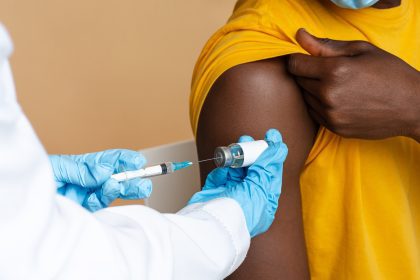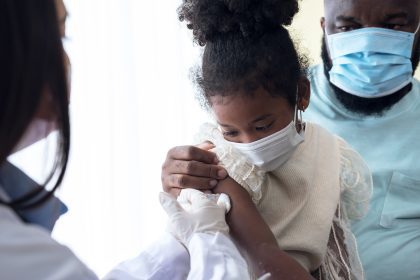The Trump administration’s decision to end the Safe to Sleep campaign comes at a particularly troubling moment, as sleep-related infant fatalities have increased by 12% between 2020 and 2022. This termination of a decades-old public health initiative raises significant concerns among medical professionals and child safety advocates about potential consequences for infant mortality rates across the country.
Three decades of progress at risk
The Safe to Sleep campaign began in 1994 as the Back to Sleep initiative, focusing specifically on reducing Sudden Infant Death Syndrome through parent education. The program proved remarkably effective, with SIDS cases decreasing from 4,037 in 1994 to 2,226 in 2009 according to data reported by Stat News.
In 2012, the National Institute of Child Health and Human Development expanded the initiative’s scope and renamed it Safe to Sleep. This evolution came in response to rising non-SIDS accidental deaths such as suffocation and strangulation, collectively categorized as Sudden Unexpected Infant Death. The broadened mission addressed comprehensive safe sleep practices beyond simply recommending back sleeping positions.
Throughout its existence, the campaign has served as the primary federal effort to educate parents, caregivers, and healthcare providers about evidence-based infant sleep safety. Its termination creates a significant gap in public health messaging at a time when infant sleep-related deaths are once again increasing after years of decline.
Pandemic complications and current trends
The COVID-19 pandemic created additional challenges for infant safety education. With restricted access to regular pediatric visits and prenatal classes, many new parents received limited guidance on safe sleep environments. This reduction in educational opportunities coincided with more families experiencing financial and housing insecurity, factors that can complicate adherence to safe sleep recommendations.
Research indicates that these pandemic-related disruptions may have contributed to the recent uptick in sleep-related infant deaths. Public health experts warn that terminating the Safe to Sleep campaign during this vulnerable period could exacerbate this troubling trend as fewer parents receive consistent messaging about preventable risks.
The National Institutes of Health identifies unintentional suffocation as the leading cause of injury death among infants under 12 months. Without coordinated federal education efforts, this statistic may worsen, particularly among populations with less access to medical care and prenatal education.
Evidence-based recommendations at stake
The Safe to Sleep campaign has consistently promoted research-backed practices shown to significantly reduce infant death risks. These guidelines include placing infants on their backs for all sleep periods, using a firm, flat sleep surface such as a safety-approved crib or bassinet, and keeping sleep areas free from loose blankets, pillows, bumper pads, and other soft items that could cause suffocation.
Additional recommendations address room-sharing without bed-sharing, avoiding infant exposure to smoke, and offering pacifiers at sleep time after breastfeeding is established. These practices, when followed consistently, have been proven to substantially reduce preventable infant deaths.
Without federal coordination of these messages, communication about safe sleep practices may become fragmented or contradictory. Parents already navigate conflicting advice from various sources, including family traditions, social media, and commercial marketing. The absence of authoritative guidance from a trusted government source may increase confusion during an already overwhelming period for new parents.
Nonprofit organizations fill the gap
First Candle, a nonprofit organization that previously collaborated with the federal government on the Safe to Sleep initiative, has expressed concern about the program’s termination. The organization’s CEO, Alison Jacobson, notes that while they will continue their educational efforts, the loss of federal funding creates significant resource gaps that nonprofit organizations cannot fully address.
Without government partnership, organizations like First Candle lack the infrastructure and reach to replicate the campaign’s nationwide impact. The federal program provided materials in multiple languages, conducted outreach to underserved communities, and maintained coordination with healthcare systems across the country.
These nonprofit efforts will continue but face substantial challenges in maintaining the comprehensive scope previously achieved through government partnership. The absence of federal guidance may particularly impact communities already experiencing healthcare disparities and higher infant mortality rates.
Public health implications
The termination of the Safe to Sleep campaign represents a significant shift in federal public health priorities. Since its inception, the program has been considered one of the most successful public health initiatives in recent decades, with measurable impact on infant survival rates.
Child safety advocates warn that this decision may undo decades of progress in reducing preventable infant deaths. Without consistent messaging, parents may receive outdated or incorrect information about infant sleep practices. Even well-meaning advice from family members often contradicts current safety recommendations, particularly regarding sleep positioning and bedding.
Health experts emphasize that sleep safety education must be consistent and ongoing, as each new generation of parents needs access to this critical information. The cumulative effect of losing this federally coordinated effort could manifest in rising infant mortality statistics in coming years.
Looking forward
As the Safe to Sleep campaign ends, pediatricians and child safety organizations urge parents to continue following evidence-based guidelines for infant sleep environments. These recommendations remain essential even without federal program support, as they represent the scientific consensus on preventing sleep-related infant deaths.
Health advocates also emphasize the importance of maintaining awareness about sudden unexpected infant death risks among healthcare providers, childcare workers, and family members who may care for infants. Consistent adherence to safe sleep practices across all caregiving environments provides the strongest protection against preventable tragedies.
For parents seeking reliable information about infant sleep safety, pediatricians remain the primary resource for evidence-based guidance tailored to individual family circumstances. While the federal program’s termination creates a significant gap in public health communication, the medical community continues to emphasize these lifesaving practices as essential for infant wellbeing.
















